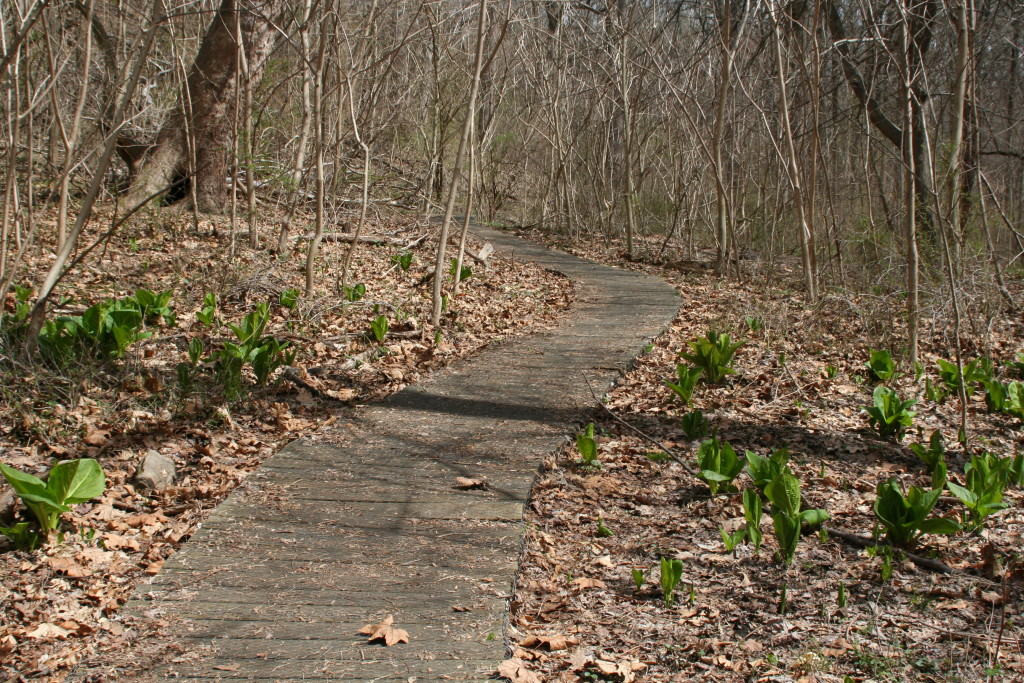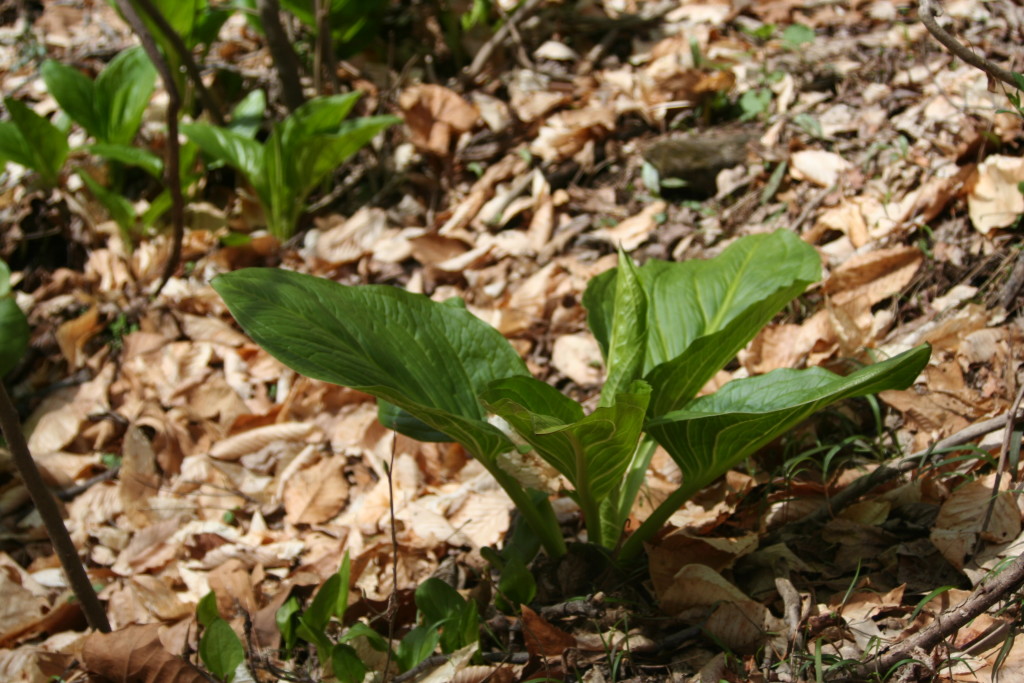By Mike Weilbacher, Executive Director
All kinds of extraordinary things happen in a springtime forest: animals like woodchucks and insects emerge from of their long winter’s naps, birds return from migration, tree buds pop open, and wildflowers begin blooming on the forest floor.
And those flowers appear in an elegantly orchestrated parade, blossoming in a predictable order. The parade always begins with skunk cabbage, in full bloom now in several wet spots in the Schuylkill Center’s woods.
Except their flowers are not quite as colorful as tulips and crocuses, and they are very differently scented.
While many of us know skunk cabbage from its big smelly leaves growing out of swampy places, few of us know the flower. It hides within a small, purple mottled leaf-like structure folded into a hood, looking like something a wizard in a Harry Potter movie might wear. And tucked into that hood is the flower, actually flowers, poking out of a round ball resembling a small Sputnik satellite.
Those flowers give off a smell reminiscent of dead and rotting flesh, and the purple hood masquerades as dead flesh as well. So beetles that eat carrion—dead stuff—are attracted by the smell, see the dead-meat hood, crawl inside looking for food, and in their search accidentally pollinate the flowers.
Mother Nature has a wicked sense of humor.
Cooler still, the skunk cabbage hoods give off heat as they grow, a characteristic not that common in the plant world. As they grow in wet places, the marshy spots that are their habitat are often iced over in late winter and early spring, the skunk cabbage hoods can actually burn their way through, melting the ice as they grow.
With skunk cabbage now up and stinking away, the wildflower parade has begun. At that same 90-degrees corner on Ravine Loop, skunk cabbage will soon be joined by a raft of stunning flowers: spring beauty, Virginia bluebell, trout lily, trillium, bloodroot, Jack in the pulpit, Jacob’s ladder, Dutchman’s breeches. Come visit and see these beauties.
Note: A version of this essay was published in the Roxborough Review in the natural Selections column on March 20, 2015.


